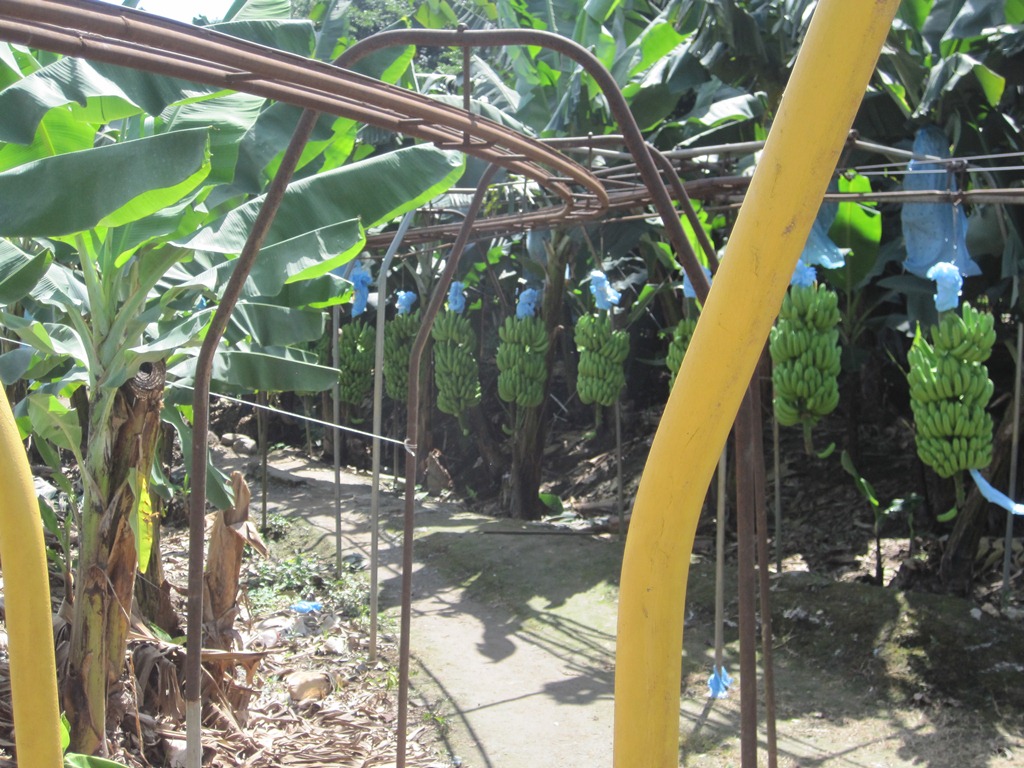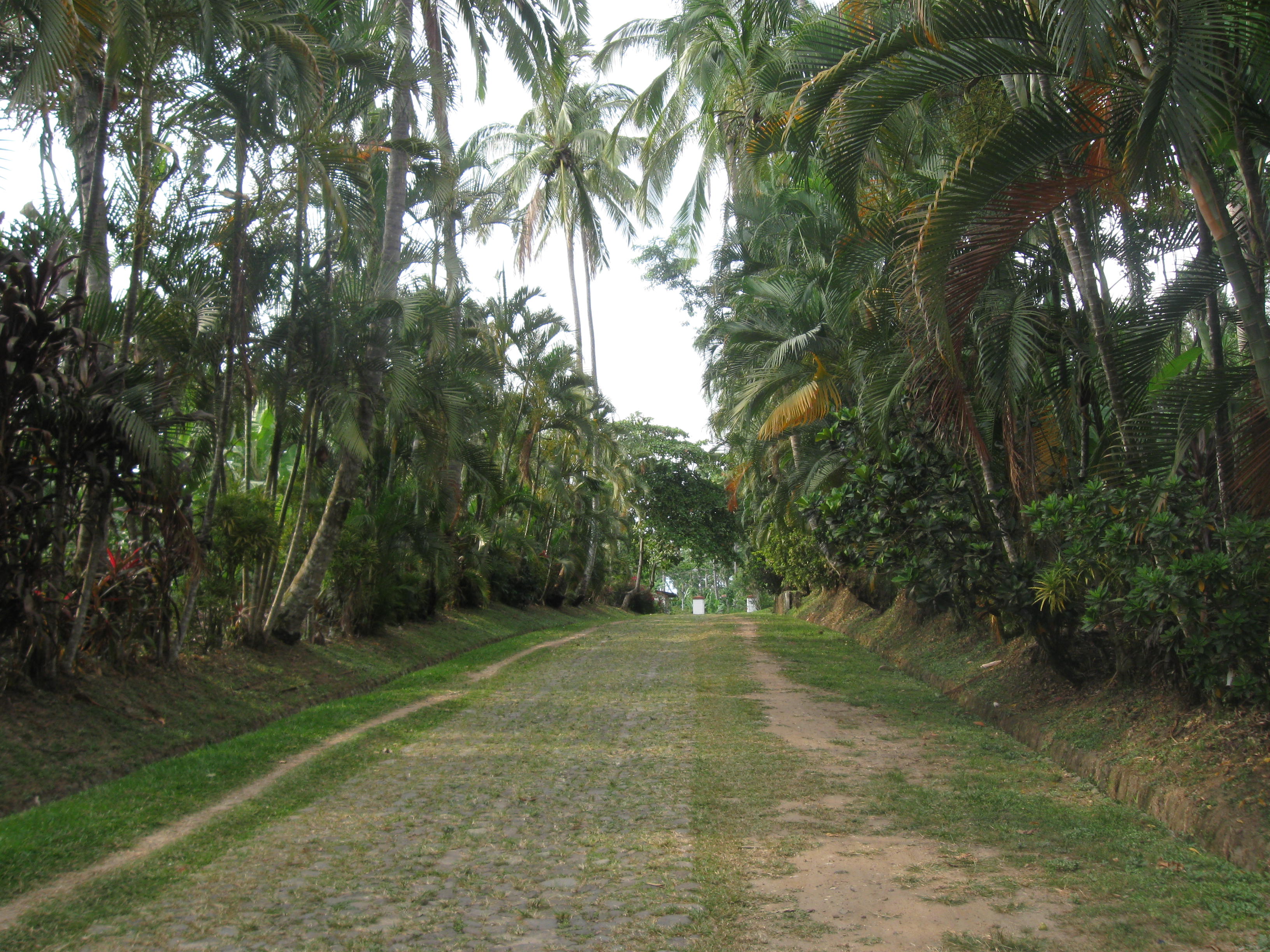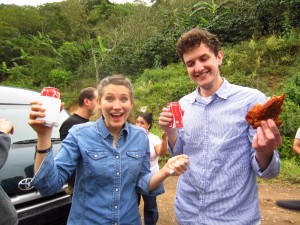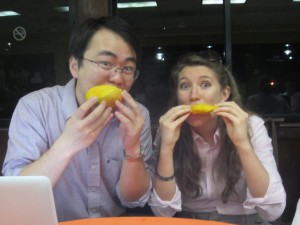Today some of us went to a large multinational corporation’s banana plantation and confirmed our suspicion that export-quality is a long way away from the farmers on the mountain.

The road into the plantation
Some differences:
Conveyor belts – nobody has to carry bananas farther than fifty meters, as compared to the farmers carrying them up a mountain on their backs.

Fertlizer – the MNC fertilizes constantly, often complemented by aerial fumigation. None of the farmers we spoke to fertilized their bananas.
Irrigation – the MNC has primary, secondary, tertiary, and quaternary canals that carry 4 cubic meters of water per second to the banana plants. The pumps burn through 15,000 gallons of diesel per day. The farmers rely on the rain.

The river the MNC uses as a water source
Many of the farmers only produce enough bananas for personal consumption. This plantation grows millions of pounds per year, and the company has several in Guatemala alone. Their crops are sent to Asia, Europe, and North America.
Today taught us just how powerful economies of scale can be.
Conveniently located next door, there was a UNESCO world heritage site Mayan ruin, so we took a little detour. It was awesome.

Quiringua Acropolis
The other half of us went into a town called Olopa in order to interview banana intermediaries (the men who buy and transport the bananas to market). We met with three different movers. The first man was the original banana mover in town and had taught the second intermediary (his brother) about the business. We learned the prices at which bananas are bought and sold among middle men before being sold to consumers at market. We now have a clearer picture of the value chain and just what goes into getting a banana from a small farm to a market in Guatemala City. Tonight we will have the opportunity to present our initial findings to the co-op team and CRS. We are looking forward to getting their feedback!

Anton and Jia enjoying the view of Olopa from the church.

Bananas getting ready to make the trip to Guatemala City































